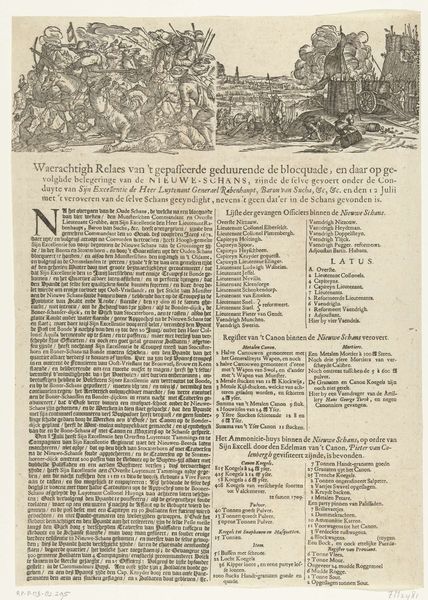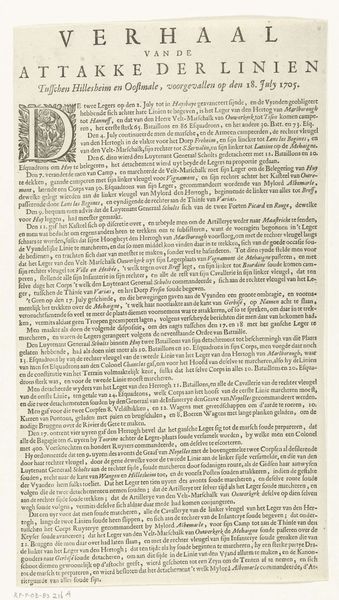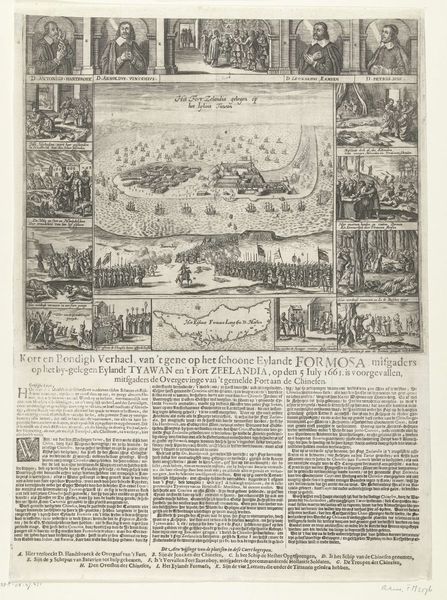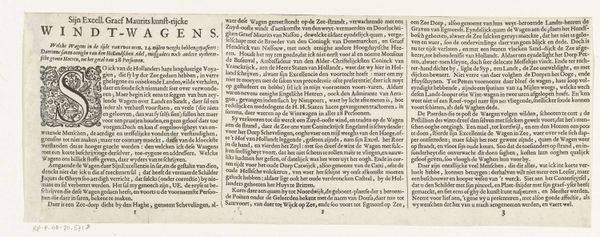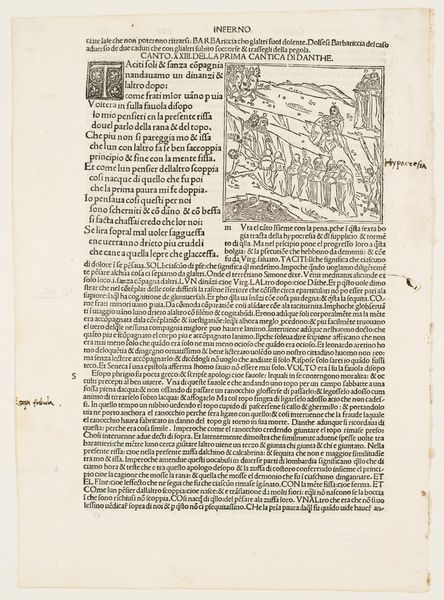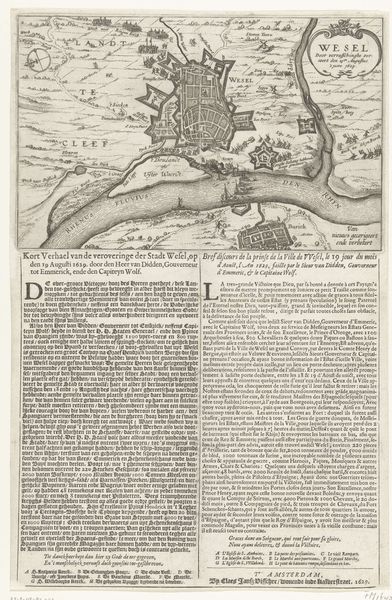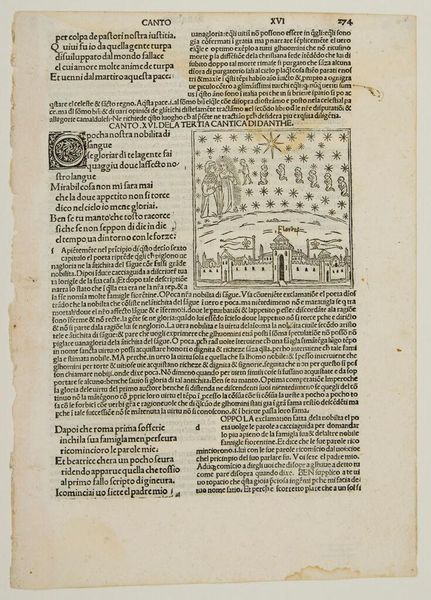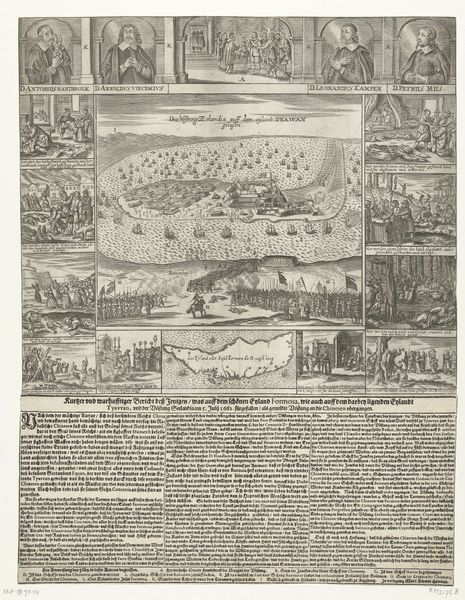
print, etching, paper, engraving
#
aged paper
#
baroque
#
dutch-golden-age
# print
#
etching
#
old engraving style
#
paper
#
cityscape
#
history-painting
#
engraving
Dimensions: height 380 mm, width 259 mm
Copyright: Rijks Museum: Open Domain
Curator: Here we have an engraving, "Beleg van Grave, 1674," created anonymously. It resides in the Rijksmuseum and offers a cityscape interwoven with historical narrative from the Dutch Golden Age. What strikes you upon viewing it? Editor: The scene feels dominated by a cold, technical precision. It seems the artistry is primarily channeled into the meticulous depiction of architectural details and siege weaponry. There’s a detachment to it, a lack of palpable human drama despite the subject matter. Curator: Indeed. It is a print etched on paper. Note how the medium itself, paper and printmaking, lends itself to dissemination. Consider its context: an informational piece aimed at wider consumption about events unfolding during wartime, allowing the public a glimpse into these sieges. Editor: Precisely. It becomes clear this isn't merely an artistic rendering. It's a document intended to communicate something specific about power, strategy, and even Dutch resilience, rendered using the conventions of Baroque cityscape art. The materiality and means of production elevate it beyond mere reportage, placing it within a tradition of representing civic pride and military prowess. Curator: Observe also how the cityscape merges with the engraving, forming a new narrative medium capable of translating news into popular culture. The deployment of materials and processes democratizes awareness through accessible consumption, enabling participation in public discourse during times of war. Editor: I am still drawn to its somber nature—even the style feels practical. The limited tonal range amplifies the harsh, systematic character of warfare that is conveyed by the scene. One gets a sense that the image serves as both a memorial to perseverance and as propaganda. Curator: Perhaps that fusion reflects the socio-economic conditions that were occurring, as people were facing hardship and war. As we engage further, understanding process can guide broader insights on this piece within social context. Editor: And I recognize, again, that despite my focus on its composition, its historical context—rooted in material production and societal forces—cannot be denied in fully appreciating "Beleg van Grave, 1674."
Comments
No comments
Be the first to comment and join the conversation on the ultimate creative platform.

